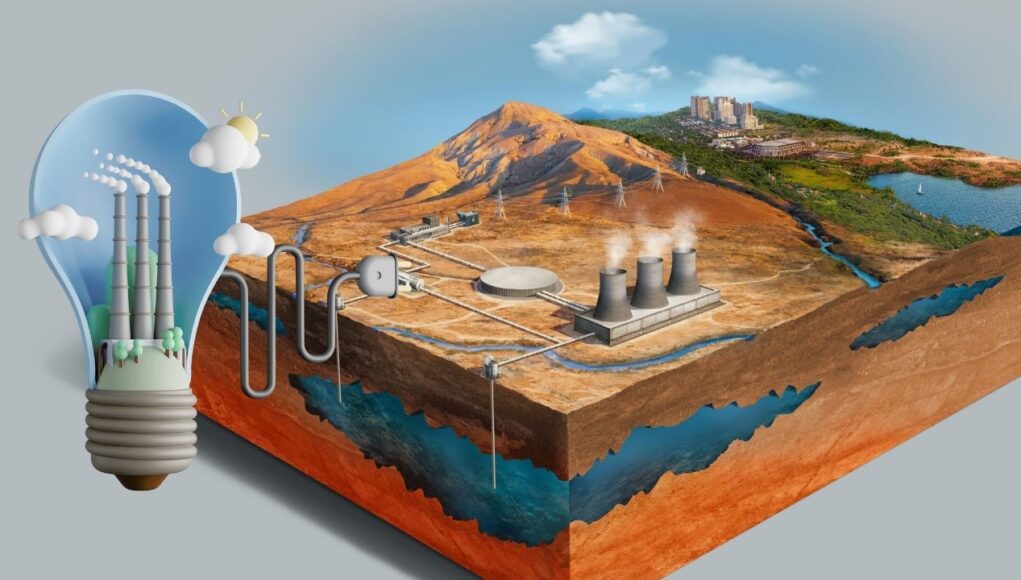The Future of Clean Energy: Enhanced Geothermal Power Plants:
Earlier this year, FVO Energy, a geothermal company based in Houston, announced a groundbreaking project: the construction of one of the world’s first enhanced geothermal power plants. This innovative technology leverages advancements in oil and gas fracking to unlock new potential in geothermal energy. The project symbolizes a significant step forward in the quest for sustainable, clean energy.
What is Enhanced Geothermal Technology?
Enhanced geothermal systems (EGS) represent a sophisticated method of generating energy by tapping into the Earth’s natural heat. The process involves drilling deep into hot rock formations, fracturing the rock to create permeability, and then circulating water through these fractures. The heated water is brought to the surface, where it generates electricity. This method is akin to hydraulic fracturing (fracking) used in oil and gas extraction, highlighting a remarkable crossover of technologies.
A Historical Perspective
The concept of geothermal power is not new. The first geothermal power generator was built in Tuscany in 1904, marking the beginning of geothermal energy utilization. The initial systems were limited by the need for naturally occurring geothermal reservoirs, which restricted their geographic applicability.
In the 1960s, researchers at Los Alamos National Laboratory began exploring the idea of using the Earth’s heat more broadly for electricity generation. Their early work laid the groundwork for what we now know as enhanced geothermal systems. Despite the potential, EGS faced significant technical and financial challenges, which slowed its development.
The Role of Fracking and Horizontal Drilling
The rise of fracking and horizontal drilling in the late 1990s revolutionized the energy industry by enabling the extraction of fossil fuels from previously inaccessible locations. These advancements also paved the way for enhanced geothermal systems. By applying similar techniques, it became possible to enhance the permeability of hot rock formations, making geothermal energy extraction feasible in more areas.
Fracking, which has been a cornerstone of oil and gas production in the United States, is now being repurposed for geothermal energy. This transition is critical as the world shifts towards cleaner energy sources to combat climate change.
The Potential and Challenges of Enhanced Geothermal Systems
Enhanced geothermal systems hold immense potential for driving advancements in the clean energy sector. With recent policy support and projections of cost reductions, the future of geothermal energy looks promising. EGS could provide a reliable, constant source of clean energy, complementing other renewable sources like solar and wind, which are intermittent by nature.
However, several challenges must be addressed for EGS to reach its full potential. Regulatory hurdles can slow the development and deployment of new technologies. Additionally, scalability remains a significant issue. While the technology works in theory and small-scale applications, scaling it to a level where it can have a substantial impact on the energy grid is still a work in progress.
The construction of one of the world’s first enhanced geothermal power plants by FVO Energy marks an exciting milestone in the journey towards a sustainable energy future. By integrating oil and gas fracking technology with geothermal energy production, we can unlock new, previously untapped sources of clean energy. While challenges remain, the continued development and support for enhanced geothermal systems could play a transformative role in the global clean energy landscape.
Watch this video VIDEO






























